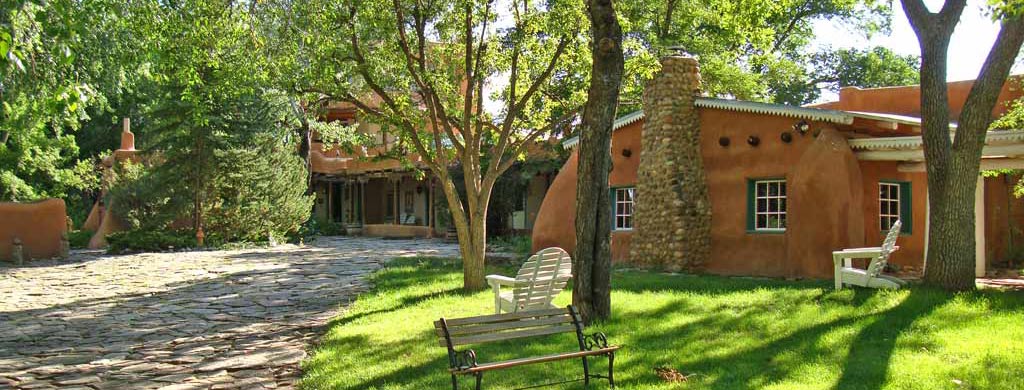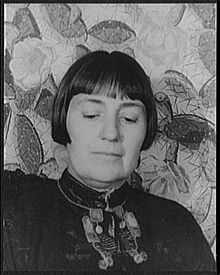by Elizabeth Cunningham

Welcome to the Mabel Dodge Luhan House
In February 2015 the Mabel Dodge Luhan House website got a new look. In April new staff came on board. Julie Keefe, General Manager, and I, in the newly created Community Engagement position, agreed to co-host a new blog. Julie will cover the day-to-day happenings at the Mabel Dodge Luhan House. I’m charged with Mabel. That may sound simple but is actually as complex as the woman herself.
Who was Mabel Dodge Luhan? She was one of the early 20th century’s most significant and under-recognized cultural figures. And she’s about to get her due. She is key to Mabel Dodge Luhan & Company: American Moderns and The West, a travelling exhibition that opens in Taos at the Harwood Museum of Art in May 2016. The exhibition shows Mabel’s long reach. She was a “political, social and cultural visionary, salon hostess, and collector of genius in almost every field of modern endeavor.” Those fields encompassed modern art, photography, drama, psychology, radical politics, social reform, and Native American rights.

Mabel continuously reinvented herself. She spent her adult life building utopian communities, as her biographer Dr. Lois Rudnick points out. An expatriate in Florence, Mabel created her first “cosmos” (1905-1912). There she attempted to recreate the Renaissance. As a “New Woman,” she created her second cosmos in Greenwich Village (1912-15), where she hosted one of the most famous salons in United States history. In Taos, her “New World” third cosmos (1918-47), she hosted visitors who helped shape American modernism. The Luhan home in the Taos environs provided a physical and spiritual oasis for scores of writers, artists, anthropologists, and reformers. Notables like D. H. Lawrence, Georgia O’Keeffe, Ansel Adams, and Martha Graham, who visited Mabel from 1918 to 1937, typically left with their social ideals, their art, and themselves revitalized. In turn, they helped create a renewed national art and culture.
Issues raised in the Mabel & Company exhibition touch on some aspects of this fascinating woman’s life. Between now and May 2016, I will investigate and introduce others. You’ll learn about Mabel’s interactions with visitors who stayed at “Mabeltown” from 1918 to 1937. In forthcoming blog posts you’ll discover, along with me, things like the role Tony Lujan and Taos Pueblo played in Mabel’s life; Mabel’s defense of Indian rights; and annotated excerpts from writings by and about Mabel. Additionally, I’ll keep you informed about events throughout the Taos community that link with issues congruent with Mabel’s life, ideas, and activities.
Stay tuned.
